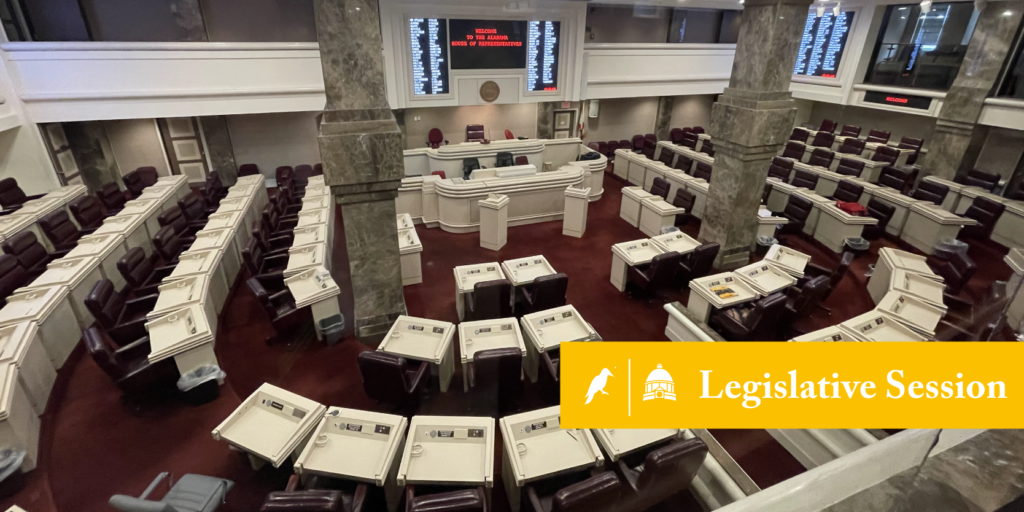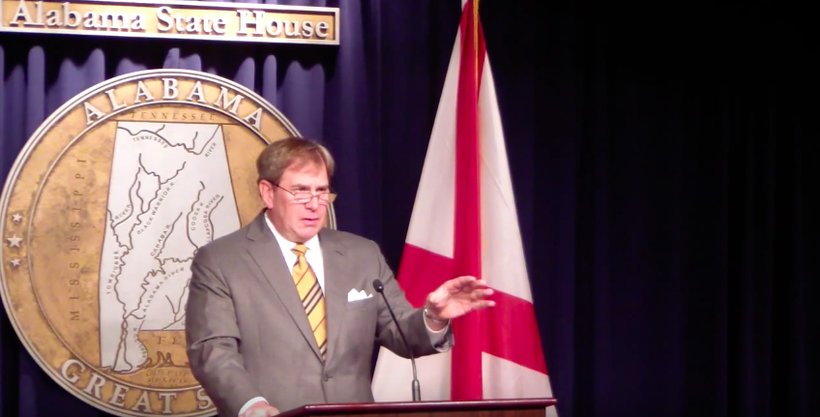
(This is Part 2 of the Alabama Policy Institute’s 3-part “Budget Basics” series: exploring Alabama’s budget system, the current fiscal climate and related challenges, and the implications for taxpayers. Part 1 can be read here.)
The Alabama state budget process begins with the Alabama Department of Finance’s Executive State Budget Office (EBO), as required by Alabama law. The EBO puts together the Governor’s Executive Budget and presents it to the Legislature. The Legislature reviews the Governor’s budget and drafts its own, with assistance from the Legislative Fiscal Office (LFO). The two appropriations bills then go through the typical legislative process, starting with consideration by the relevant committees: the Senate Committee on Finance and Taxation- ETF, the Senate Committee on Finance and Taxation-GF, the House Ways and Means Education Committee, and the House Ways and Means General Fund Committee.
The Governor’s proposed FY2015 General Fund budget was not substantially altered as it made its way through the legislative process. The Governor recommended $1.82 billion and a $1.83 billion budget was enacted. On the other hand, the Senate reduced by $75 million the Governor’s $5.99 billion proposal for the ETF, while the House version decreased the appropriation by around $60 million (which was adopted). The main source of disagreement was the Governor’s inclusion of a 2% pay raise for K-12 educators at a cost of $68 million and a $72 million increase for education employee insurance. If both of these items had been adopted, the ETF’s statutory spending cap would have been exceeded by $92 million. The Legislature opted to focus resources on the education health insurance without providing for a pay raise, and exceeded the cap by a much smaller margin. On April 11, 2014, the Governor signed the FY15 budget, allocating $1.8 billion to the General Fund (up 5.1% from last year) and $5.9 billion to the Education Trust Fund (up 2.9% from last year).
Simply put, it has become more and more difficult to maintain level funding, much less increased funding, for all of the obligations of state government.
As previously mentioned, the Alabama Constitution requires a balanced budget. Proration is declared when revenues from income, sales and other taxes fall short of estimates and across-the-board cuts are implemented, or prorated.
Since 1980, the State has declared proration 11 times for the Education Trust Fund and eight times for the General Fund. In the last decade alone, the ETF went into proration six times and the GF three times. Notably, since the Republicans took power, the ETF has not gone into proration, because the 2011 adoption of the Education Rolling Reserve Act (ERRA) caps the appropriation limit. Proration was declared for the General Fund in 2012. Poor stock market conditions and tornado recovery funds were cited as contributing factors.
In some fiscal years, to avoid proration or to reduce its impact, money has been borrowed from the State rainy day accounts. The rainy day accounts, one for the ETF and one for the GF, are part of the Alabama Trust Fund. The Alabama Trust Fund was established in 1985 and is funded by the State’s oil and gas revenues. In 2008, the ETF and GF Rainy Day Accounts were set up within the Trust fund.
There are constitutional limits on how much money can be withdrawn in a particular fiscal year. Most recently, in 2009, the maximum withdrawal–$437 million–was made from the Education Rainy Day Account. The ETF must fully repay the remaining balance of $162 million by July 2015. In FY2010, $161 million was withdrawn from the General Fund Rainy Day Account. At present, there is no set schedule for repayment but it must be repaid by 2020. In September 2012, voters approved a constitutional amendment to withdraw $437 million from the Alabama Trust Fund over the course of three years to make up for General Fund shortages. When the Legislature reconvened in 2013, a bill sponsored by Sen. Taylor (R-Prattville) and former Rep. Love (R-Montgomery) was passed to require an automatic payback of this withdrawal by 2026.
The Alabama economy continues to experience stagnant economic growth. Simply put, it has become more and more difficult to maintain level funding, much less increased funding, for all of the obligations of state government. Republican-led efforts in the last quadrennium to pass legislation limiting ETF spending according to past growth, consolidating agencies or offices, streamlining a variety of operations, and ensuring the repayment of debts owed to the various savings funds are a solid step in the right direction.
As it currently stands, more ‘tightening of the belt’ will be required. Providing for more flexibility in the allocation of resources will be another necessary consideration.
Katherine Green Robertson is senior policy counsel for the Alabama Policy Institute (API), an independent non-partisan, non-profit research and education organization dedicated to the preservation of free markets, limited government and strong families. If you would like to speak with the author, please call (205) 870-9900 or email her at katheriner(at)alabamapolicy.org.












